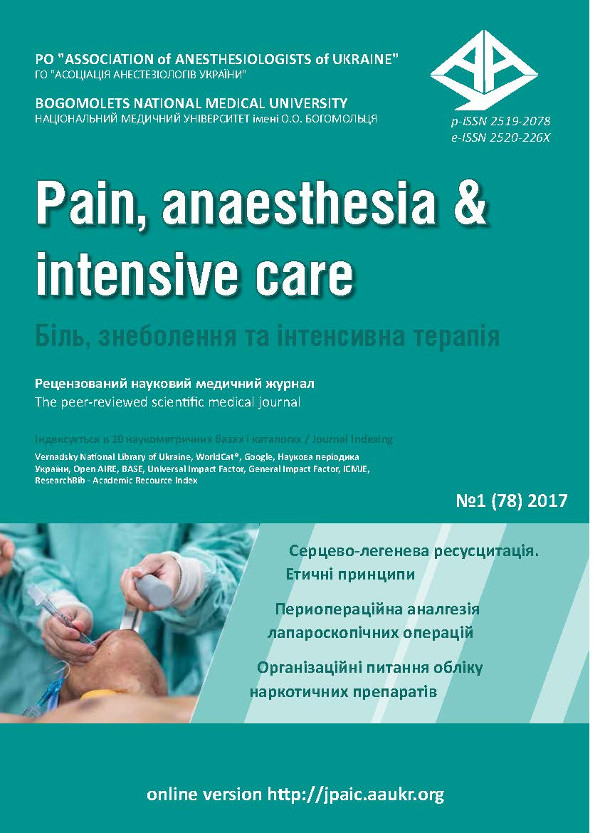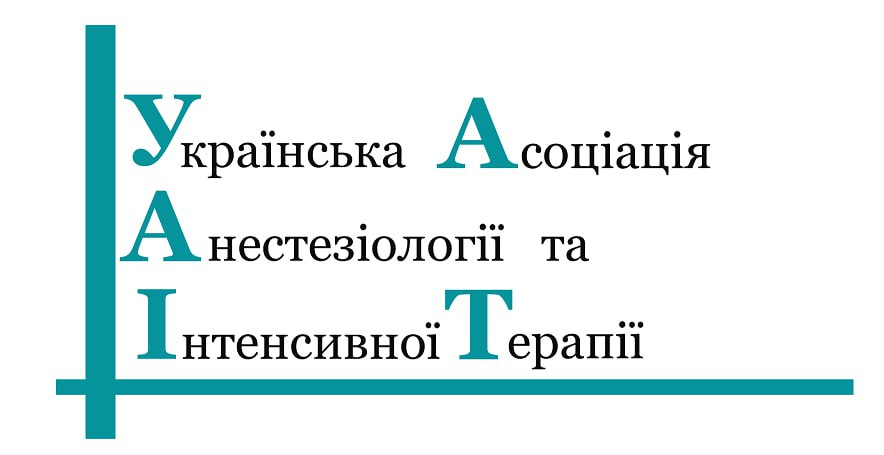“Do-not-resuscitate orders: a clinical ethics perspective” medicolegal and bioethics
DOI:
https://doi.org/10.25284/2519-2078.1(78).2017.103122Ключові слова:
серцево-легенева реанімація, «DNR, Do Not Resuscitate orders», етичні принципиАнотація
Закрита серцево-легенева реанімація (СЛР), завдяки успіху, якого вона здобула післявпровадження її в операційних для рятування життів пацієнтів під час наркозу, була
прийнята у відділеннях інтенсивної терапії, потім поширилась до масштабів цілих
лікарень, і нарешті вийшла за їх межі. Це призвело до етичної дилеми стосовно
пацієнтів, які добровільно вимагають припинення штучних методів підтримки
функціонування їх органів, або ж стосовно тих тяжких ситуацій, коли члени родини
повинні прийняти подібне рішення щодо своїх родичів, які страждають, але
перебувають без свідомості. В цьому огляді було проаналізовано етичні принципи, на
які опираються лікарі, лікарні, пацієнти (або ж їх довірені особи) для втілення своїх
суб’єктивних моральних обов’язків забезпечення комфорту, захисту та лікування
пацієнтів – з особливим акцентом на наказах «відмовитись від реанімації» (DNR, Do
Not Resuscitate orders). Безсумнівно, «не реанімувати» не означає «не лікувати».
Посилання
Kouwenhoven WB, Jude JR, Knickerbocker GG. Closed-chest cardiac massage. JAMA 1960; 173:1064–1067. https://doi.org/10.1001/jama.1960.03020280004002
 |
|  |
| 
Jude JR, Kouwenhoven WB, Knickerbocker G G. Cardiac arrest: Report of application of external cardiac massage in 118 patients. JAMA 1961; 178:1063-1070. https://doi.org/10.1001/jama.1961.03040500005002
 |
|  |
| 
Burns JP, Edwards J, Johnson J, Cassem NH, Truog RD. Do-not-resuscitate order after 25 years. CritCareMed 2003;31(5):1543-1550. https://doi.org/10.1097/01.ccm.0000064743.44696.49
 |
|  |
| 
Symmers WS. Not allowed to die. BMJ 1968; 1:442. https://doi.org/10.1136/bmj.1.5589.442
 |
|  |
| 
Spiegel D, Stroud P, & Fyfe A. (1998). Complementary medicine. The Western Journal of Medicine, 168(4), 241-247.
 |
|  |
| 
Waisel DB, Truog RD. The cardiopulmonary resuscitation-not-indicated order: futility revisited. AnnInternMed. 1995; 122:304-308. https://doi.org/10.7326/0003-4819-122-4-199502150-00011
 |
|  |
| 
Weindling P. Nazi Medicine and the Nuremberg Trials: From Medical War Crimes to Informed Consent. Palgrave MacMillan, New York, 2004. https://doi.org/10.1057/9780230506053
 |
| 
Gillon R. Medical ethics: four principles plus attention to scope. BMJ 1994;309:184. https://doi.org/10.1136/bmj.309.6948.184
 |
|  |
| 
Berger JM. Ethics in palliative and end-of-life care. In: Essentials of Palliative and End of Life Care, Vadivelu N, Berger JM, Kaye A, Editors. Yale University, Springer N.Y. 2012. https://doi.org/10.1007/978-1-4614-5164-8_27

Casssel EJ. The Nature of Suffering and the Goals of Medicine. NEJM 1982;306:639-645. https://doi.org/10.1056/nejm198203183061104
 |
|  |
| 
Truog RD, Brett AS, Frader J. Sounding board: the problem with futility. NEJM 1992; 326 (23): 1560-1564. https://doi.org/10.1056/nejm199206043262310
 |
| 
Hackler JC, Hiller C. Family consent to orders not to resuscitate. JAMA 1990;264:1281-1283. https://doi.org/10.1001/jama.1990.03450100071028
 |
|  |
| 
Diem SJ, Lantos JD, Tulsky JA. Cardiopulmonary resuscitation on television – miracles and misinformation, NEJM June 13, 1996; 334:1578-1582. https://doi.org/10.1056/nejm199606133342406
 |
|  |
| 
Sasson C, Rogers MAM, Dahl J, Kellermann AL. Predictors of survival from out-of-hospital cardiac arrest: A systematic review and meta-analysis. Circ Cardiovasc Qual Outcomes 2010; 3:63-81 (originally published online November 10, 2009). https://doi.org/10.1161/circoutcomes.109.889576
 |
|  |
| 
Shmerling RH. Medical myths: CPR: Less effective than you might think. October 23, 2012. On-line http://www.intelihealth.com (search term “CPR”).
Gilgunn v Massachusettes General Hospital, the Suffolk County Superior Court(42) in Boston (1995).
Fine RL. Medical futility and the Texas Advance Directives Act of 1999. Proc Bayl Univ Med Cent. 2000 Apr; 13(2): 144–147.
Hippocratic corpus. The Art. In: Reiser SJ, Dyck AJ, Curran WJ, editors. Ethics in Medicine: Historical Perspectives and Contemporary Concerns. Cambridge, Mass: MIT Press; 1977. pp. 6–7.

Raffin TA, Withdrawing life support: how is the decision made? JAMA 1995; 273 no 9:738-739. https://doi.org/10.1001/jama.1995.03520330068040
 |
|  |
| 
Asch DA, Hansen-Flaschen J, and Lanken PN. Decisions to limit or continue life-sustaining treatment by critical care physicians in the United States: conflicts between physicians’ practices and patients’ wishes. Am . J. Respir. Crit. Care Med. 1995; 151:288-292. https://doi.org/10.1164/ajrccm.151.2.7842181
 |
|  |
| 
Salgo v Trustees of Leland Stanford Hospital, California Appeals Court 1957. (Court ruled that physicians must inform patients of the risks, benefits and alternatives of treatment).
Canterbury v Spence, D.C. Circuit Court, 1972 (Concept of reasonable person).
Virtual Mentor, American Medical Association Journal of Ethics, July 2010, Volume 12, Number 7: 554-557.

Univers al Out-of-Hospital DNR Systems,” Opinion 2.225 Optimal Use of Orders-Not-to-Intervene and Advance Directives, adopted June 2005, (www.virtualmentor.org Virtual Mentor, July 2010 – Vol 12 555 of the AMA Code of Medical Ethics Opinions on Seriously Ill Newbor ns and Do-Not-Resuscitate Orders.
California Appeals Court 1984 decision in case of William Bartling.
Maksoud A, Jahnigen DW, Skibinski CI. Do not resuscitate orders and the cost of death, Arch Intern Med. 1993;153(10):1249-1253. https://doi.org/10.1001/archinte.1993.00410100075011
 |
| 
Walker RM. DNR in the OR: Resuscitation as an Operative Risk, JAMA. 1991;266:2407-2412. https://doi.org/10.1001/jama.1991.03470170095031
 |
| 
Truog, RD, Waisel, D B, Burns, JP. DNR in the OR; A goal directed approach. Anesthesiology 1999;90 No1:289-295. https://doi.org/10.1097/00000542-199901000-00034
 |
| 
Waisel DB, Simon R, Truog RD, Baboolal H, Raemer DB. Anesthesiologist management of perioperative do-not-resuscitate orders: a simulation-based experiment. Simul Healthc. 2009;4(2):70-76. https://doi.org/10.1097/sih.0b013e31819e137b
 |
| 
YuenJK, ReidMC, Fetters MD. Hospital do-not-resus citate orders: Why they have failed and how to fix them. J Gen Intern Med. 2011; 26(7): 791–797. https://doi.org/10.1007/s11606-011-1632-x
 |
| 
Goodman N. Neither obsession nor distraction: words must be chosen well. Anesth Analg 1998;87:743-744. https://doi.org/10.1213/00000539-199809000-00055
 |
| 
##submission.downloads##
Опубліковано
Як цитувати
Номер
Розділ
Ліцензія
Авторське право (c) 2017 Jack M. Berger, Vladimir Zelman, Rodolfo Amaya

Ця робота ліцензується відповідно до Creative Commons Attribution-NonCommercial 4.0 International License.
Автори, які публікуються у цьому журналі, погоджуються з наступними умовами:
a. Автори залишають за собою право на авторство своєї роботи та передають журналу право першої публікації цієї роботи на умовах ліцензії Creative Commons Attribution-NonCommercial 4.0 International License, котра дозволяє іншим особам вільно розповсюджувати опубліковану роботу з обов'язковим посиланням на авторів оригінальної роботи та першу публікацію роботи у цьому журналі.
b. Автори мають право укладати самостійні додаткові угоди щодо неексклюзивного розповсюдження роботи у тому вигляді, в якому вона була опублікована цим журналом (наприклад, розміщувати роботу в електронному сховищі установи або публікувати у складі монографії), за умови збереження посилання на першу публікацію роботи у цьому журналі.
c. Політика журналу дозволяє і заохочує розміщення авторами в мережі Інтернет (наприклад, у сховищах установ або на особистих веб-сайтах) рукопису роботи, як до подання цього рукопису до редакції, так і під час його редакційного опрацювання, оскільки це сприяє виникненню продуктивної наукової дискусії та позитивно позначається на оперативності та динаміці цитування опублікованої роботи (див. The Effect of Open Access).








